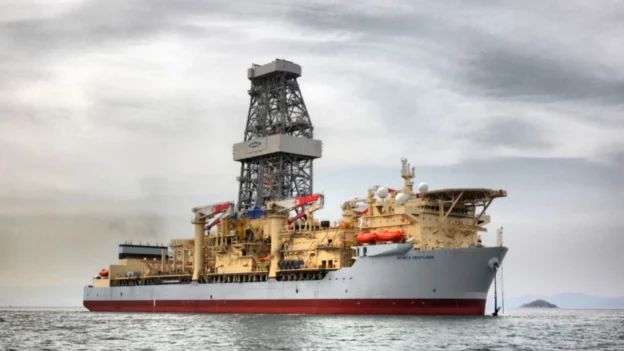Rhino Resources Namibia announced the discovery of a productive zone with high yielding liquid gas condensate in the Volans-1X well, located in Block 2914A of the Orange Basin.
This well is part of the PEL85 license, where Rhino operates with a 42.5% interest along with Azule Energy (42.5%), NAMCOR (10%) and Korres Investments (5%).
Prospectivity of the liquid gas condensate well increases
Drilling of the Volans-1X well commenced on July 31, 2025 using the Deepsea Mira semi-submersible unit. On August 30, it reached a total depth of 4,497.5 meters TVDSS, encountering 26 meters of net productive zone in Upper Cretaceous reservoirs. Evaluations revealed excellent quality petrophysical properties, no water contact, and a remarkable condensate-to-gas ratio(CGR) greater than 140.
Wireline logging allowed the collection of hydrocarbon samples and sidewall cores, with initial tests showing a density of 40° API gravity. Laboratory analysis by hot shot indicated promising specifications at both the top and bottom of the reservoir interval. Evaluation activities continue to determine commercial potential and integration of these data into broader geological studies of the block.
This discovery adds to those previously made in the Sagittarius-1X well and the Capricornus-1X well, consolidating a sequence of exploration successes for Rhino and its partners. According to CEO Travis Smithard, the results strengthen the understanding of the subsurface and open up new lines of research within the license. The Deepsea platform Mira was mobilized to a new location on September 14, while laboratory studies of the Volans-1X continue.
Based in Cape Town, Rhino Resources continues its expansion strategy in Southern Africa, focusing on both offshore exploration and onshore resources such as biogenic gas, helium and native hydrogen.
Source and photo: Rhino Resources

